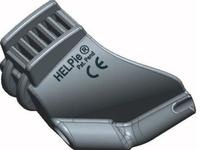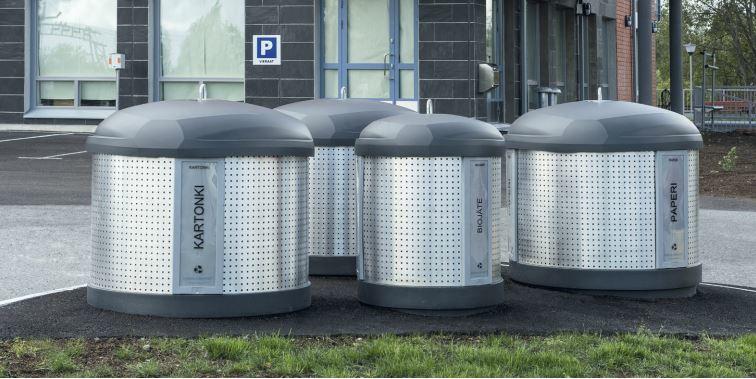"Remember to put design protection on your checklist for the patenting process"
22.01.2017In technical applications design protection can be an effective way to supplement the protection of a patent or utility model – or vice versa. Practical examples have shown that it’s well worth thinking outside the box when it comes to protection.
How easily IPR matters become routine if we only stick to what we know. A company which is accustomed to submitting patent or utility model applications will submit them automatically without considering new innovations, such as the opportunities presented by design protection. Or if a significant innovation lies in the appearance of the product and the main focus is in the design, it won’t necessarily occur to anyone to also investigate the solution’s technical novelty, which could also be protected by a utility model, if not a patent.New innovations are rarely either technical or design matters alone. That’s why we should always consider various combinations of protection from a business perspective. What features generate turnover and competitive advantage? How can you best keep competitors at bay? Companies almost certainly have this information, but it does not always make it to IPR plans or is conveyed to the company’s external patent attorney.
Product development, design and marketing are often separate areas of responsibility. This may be that the opportunity to exchange thoughts and ideas from an IPR perspective rarely presents itself organically. That’s why Matti suggests that an evaluation of design protection be actively included in the patenting process – that is, put on the checklist – for all companies which submit patent applications. Often the appearance of a product overlaps with the technical solution and functionality.
Design protection is a handy form of protection in that the product does not have to be inventive or especially artistic in order to obtain the protection; it’s enough if the product is original. The threshold for applying for and obtaining the protection is low, and the costs are relatively affordable, for e.g. Europe-wide protection.
If you put hundreds of man-hours into a design, design protection can be an invaluable way of safeguarding your work! A relatively small investment can protect an innovation with hours and hours of work and effort behind it. If design has any bearing on business – and who would claim it hasn’t? – it’s well worth considering making design protection routine.
Examples of smart combinations of models and patents or utility models can be found amongst Kolster’s client companies.
Case Medrian Oy & HELPie
 Medrian Oy developed the HELPie product as a dental care aid. HELPie is a disposable product that has three functions within one product: a tongue holder, saliva suction, and bite support. The product facilitates a dentist’s or dental hygienist’s work, and allows a patient to relax, too, as the device keeps the mouth open as well as the tongue and salivation under control.
Medrian Oy developed the HELPie product as a dental care aid. HELPie is a disposable product that has three functions within one product: a tongue holder, saliva suction, and bite support. The product facilitates a dentist’s or dental hygienist’s work, and allows a patient to relax, too, as the device keeps the mouth open as well as the tongue and salivation under control.
Both design protection and a patent have been sought for the HELPie product. What made this case exceptional was that the design was already complete at the time when its protection was first thought of. Often, the subject matters to patented first have a particular function and technical solution, with the final desing for a commercial product taking shape later on.
HELPie is a design product with an authoritative appearance that has sales appeal to engineers, too. The design brings about certain functions to the product, but additionally includes technical solutions where the design and technical implemantation are interleaved. First, by using design protection, exact protection was sought for the product against direct copying. After this, a novelty search was carried out, which revealed that the product has inventiveness in it, which can be protected more extensively by a patent.
-Circumventing the protection of HELPie has been made very difficult by means of the patent
- If design protection, only, had been sought for the product, a competitor could have fashioned the same functions with a slightly differing design. Design protection alone might not be able to keep competitors at bay for very long. But design protection provides a longer term of protection than a patent, and it is also most important for the brand - a particular design is associated with a product, and the whole is protected.
Case Luowia Collection Oy

Luowia Collection Oy has developed the Luowia Collection® waste collection system, whose technical solution and design are both protected. The waste containers’ appearance plays a significant role in purchasing decisions, especially when made by housing associations and municipalities. For waste collection companies on the other hand, the functionality of the collection containers is of high significance. From a patent attorney perspective, Luowia was able to effectively utilise the combination of design protection and utility model in its products.
Design protection also indirectly provides protection for technical solutions. Competitors are forced to seek a less optimal, technically weaker solution.
The system’s cylindrical underground component is optimised to withstand pressure from the ground and groundwater. The three-panel outer cover and lid are aesthetically pleasing and do not clash with the surroundings. The containers are easy to maintain and are cost-efficient, since the outer cover elements can be detached and replaced. There is space between the elements for markings and instructions.
The combination of design protection and utility model has rapidly and affordably achieved broad protection for the technical solution over 10 years, and precise protection for the appearance over 25 years.
According to Matti, in practice it is more difficult to nullify a utility model than it is to nullify a patent.
The lower set of criteria that apply to utility models mean that the models are also more durable than patents. A combination of utility model and design protection can prove to be an extremely intelligent and effective form of protection for small companies.
One weakness of the utility model is that its novelty is not usually investigated unless separately requested. In these cases, there is not necessarily any information about whether the protection would remain valid if it had to be defended, or whether wider international protection would be possible.
Consider design protection for original spare parts
Spare parts are renowned for being copied; up to 80% of certain spare parts may be copies. Often, the bigger or more expensive a device is, the longer the product’s lifespan can be extended through the use of spare parts. Over a product’s life span, spare parts trade can be the largest component of cash flow, so it’s well worth keeping it under your control.
Certain original and key spare parts at least should be protected against direct copying using design protection. Even though design protection may not ultimately prove to be valid, if tested in court, the very existence of design protection – just as is the case with the existence of patents – will most probably delay and hinder competitors’ entrance onto the markets. In any case, design protection is an effective deterrent.